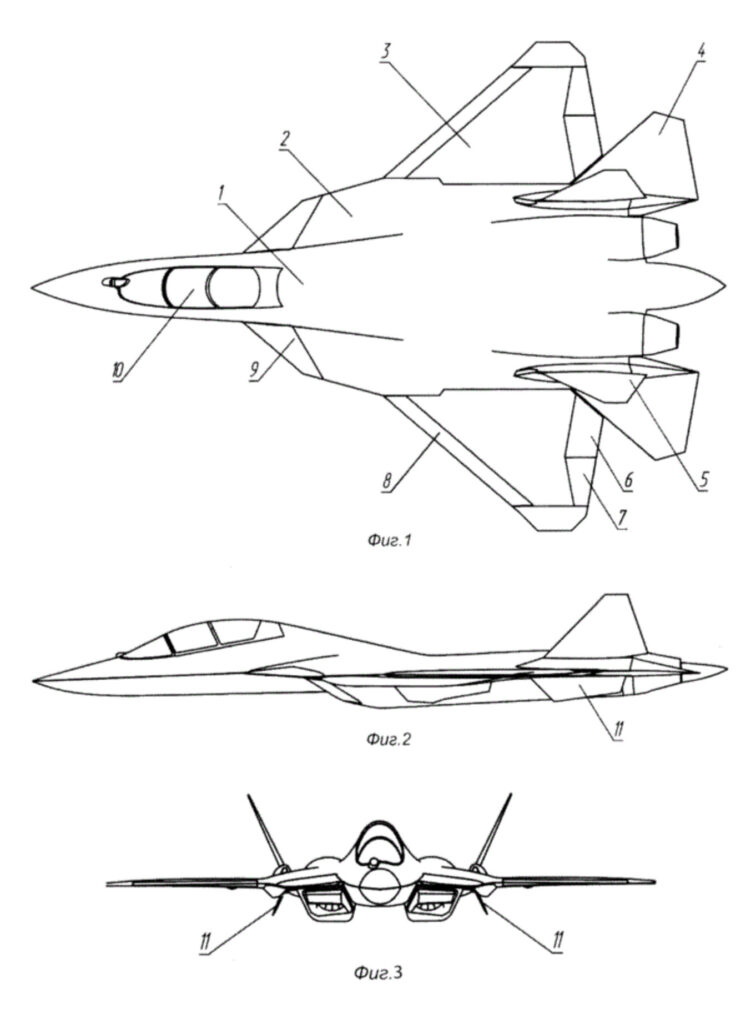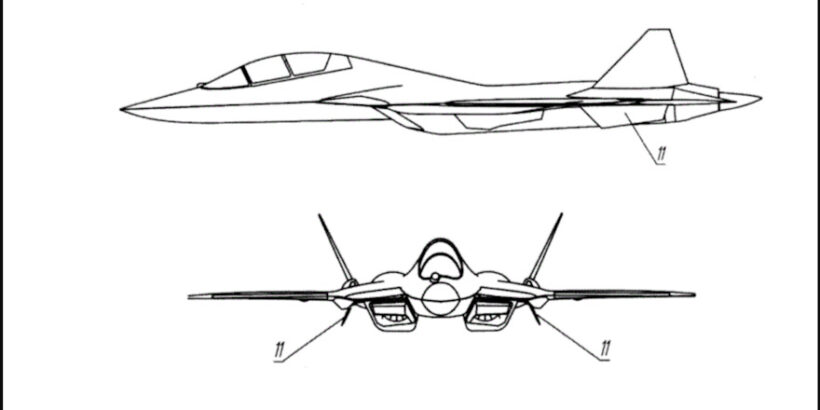The United Aircraft Corporation has received a patent for a two-seat multifunctional airplane for use as an airborne control point and for ensuring interaction between aviation and military formations in network-centric methods of controlling weapons objects on the battlefield. The airplane concept was developed by the Sukhoi Design Bureau. The patent RU2807624 was registered by the Federal Service for Intellectual Property on November 17, 2023.
It is assumed that the aircraft can also be used as a control point for unmanned aerial vehicles, which is achieved through a wide range of communication facilities, including satellite, high-speed communication channel and installation of equipment for group transmission of information over long distances.
The rear cockpit of the two-seat aircraft is optimized to perform the functions of a weapons operator and air command post, its information field is provided by an expanded panoramic aviation indicator and an additional indicator to increase the operator’s working field, controls are installed to transfer control priority from one cockpit to another, as well as exclude controls not required by the second crew member. The equipment of the co-pilot’s cockpit makes it possible to receive information from various external sources, both aviation and land and sea, to analyze it on board the aircraft and to issue recommendations or commands to perform combat missions to the aircraft of the group, taking into account their fuel reserves and combat equipment.
Increase in range and flight duration is achieved due to a 10 percent greater capacity of fuel tanks compared to the prototype, as well as the placement of fuel tanks in the cargo compartments of the aircraft. The increased cross-sectional area of the cockpit compared to the prototype makes it possible to install on the instrument panel large multifunctional indicators for displaying various tactical and aerobatic information, as well as equipment for separate control of aircraft systems between cockpits.

Composite materials are widely used in the aircraft design, which ensures high weight efficiency. Radio-absorbing materials and coatings are used to increase the level of stealth. The plumage, along with the use of an integral load-bearing fuselage and engines with a deflectable thrust vector, contributes to ensuring super maneuverability, expanding the range of altitudes and flight speeds. To further increase stability on the lower part of the tail beam installed subfuselage ridges.
According to the drawings presented in the patent, it can be assumed that the prototype of the multifunctional airborne control center is the fifth-generation Su-57 fighter. However, the abstract of the patent states that the closest are the Su-30MK family of aircraft. The joint features include an integral aerodynamic layout with smooth mating of the wing and fuselage, all-rotating horizontal plumage console and vertical plumage console.
As disadvantages of the prototype, the authors of the invention point out the shape of the airframe and the placement of the target load on the external suspension, which significantly reduces the effectiveness of combat use of the aircraft and does not allow to achieve a low level of visibility in the radar range. It is also noted that the airborne electronic equipment of the prototype has limitations in terms of complex data processing in network-centric warfare.
Sukhoi Design Bureau’s invention is aimed at creating a two-seat multifunctional aircraft of integral aerodynamic layout with low radar visibility, designed to destroy air, ground and surface targets with guided and unguided weapons, capable of acting as an airborne command and control center in network-centric operations of mixed groups of aircraft and, as a consequence, possessing a significantly higher level of combat effectiveness.



